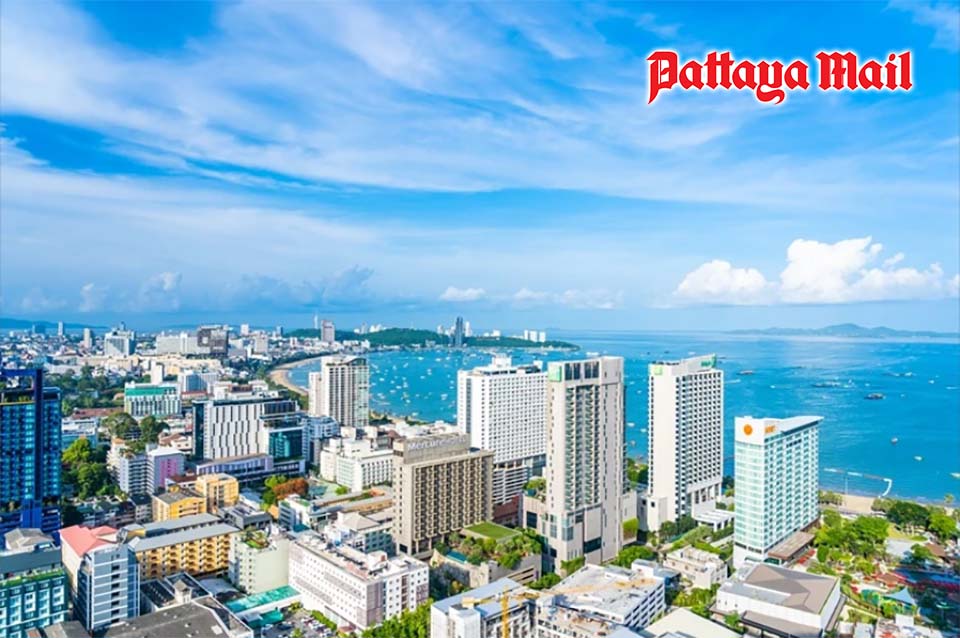Foreigners shift toward resale and mid-range condos as Pattaya and Bangkok remain dominant markets
Despite a slight slowdown in transfers during the first quarter of 2025, demand for properties in Bangkok and Pattaya remains strong, highlighting their ongoing appeal as prime investment and long-term residence destinations for international buyers.
PATTAYA, Thailand – In recent years, foreign investment—especially in condominium purchases—has been a key driver of Thailand’s real estate market. This trend accelerated after the COVID-19 pandemic, with Chinese buyers leading the surge due to their interest in long-term stays and the country’s thriving tourism sector.
But recent figures from the Real Estate Information Center (REIC), under the Government Housing Bank (GH Bank), indicate a modest cooling in the market. In the first quarter of 2025, foreign condo transfers totaled 3,919 units nationwide, down 0.5% year-over-year. The total value fell by 9.0% to 16.39 billion baht, with the total area of transferred units decreasing 5% to just over 164,000 square meters.
Interestingly, the share of foreign transfers in the overall condo market grew slightly. Foreigners accounted for 18.0% of all transferred units, up from 16.7% a year earlier, while their share of total transfer value rose to 29.3%, up from 28.6%. This suggests that although foreign buyers are purchasing fewer units, they are still targeting higher-value properties.
Bangkok and Chonburi (home to Pattaya) remained the dominant locations for foreign condo ownership. Bangkok led with 1,695 units valued at 9.55 billion baht, while Chonburi followed with 1,309 units worth 3.8 billion baht. Together, these provinces accounted for nearly 77% of foreign unit transfers and more than 81% of the total transfer value.
Chinese nationals continued to lead the pack, purchasing 1,481 units worth 6.1 billion baht, representing 37.8% of all foreign-bought units and 37.3% of total value. However, both figures were lower than the previous year. Analysts point to concerns over safety in Thailand as a key reason for the slowdown in Chinese property investment.
Following China, buyers from Myanmar, Russia, Taiwan, and France made up the top five nationalities by volume. In terms of value, the United States displaced France to claim fifth place. Notably, buyers from the United Kingdom recorded the highest average condo price at 5.7 million baht per unit and the largest average unit size at 60.1 square meters, suggesting a more affluent segment of buyers.
The preference for new condos slightly outweighed resale units in Q1/2025, with new projects accounting for 53% of foreign transfers. However, there was a noticeable quarter-on-quarter decline in this share, indicating a growing interest in resale properties.
Foreign buyers largely focused on the lower and mid-price segments. Condominiums priced below 3 million baht accounted for over half the units transferred, though they made up only around 22% of total value. The 3–5 million baht range attracted nearly a quarter of buyers, while high-end properties priced over 10 million baht—despite representing just 7% of units—captured nearly 31% of the overall transfer value.
Smaller and mid-sized units remained the most popular choices. Nearly 46% of all foreign-bought condos measured between 31 and 60 square meters, while 40% were 30 square meters or smaller. Just under 10% fell in the 61–100 square meter range, and only 4% exceeded 100 square meters. In terms of value, the 31–60 square meter category dominated with 7.2 billion baht transferred.
The data confirms a clear trend: while overall numbers dipped slightly, foreign buyers—especially those seeking higher-end condos in Bangkok and Pattaya—remain a crucial force in Thailand’s real estate market. Yet concerns over safety, particularly among Chinese buyers, may continue to weigh on growth in the coming quarters.



